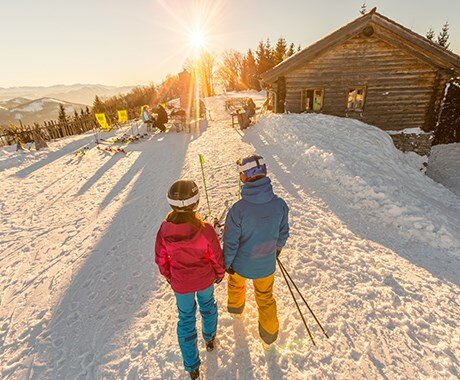In the article “Quo vadis alpine tourism – future with and without snow” Markus Redl drew a total of nine future scenarios, two of which – each assigned to the years from 2030 – are something like the crux of the climate change-driven development of ski resorts: 4. Strategic concentration of the “must-have” snow sports offer and 5. Special flexibility in the “nice-to-have” snow sports offer.
The following assumptions and thoughts are behind these two future scenarios:
Risk management: Ski resorts must prepare for snow-poor winters and/or those with negative weather events such as heavy rain or frequent storms; relying on the “hope principle” for snowy winters is not enough. In particular, it is important to prevent a total failure of the winter sports offer of a destination/small region during the Christmas holidays. Other outdoor activities are complementary.
Capacity management: If the area to be snowed (unconditionally or with the highest priority) is reduced for cost or risk management reasons, then capacity management becomes particularly important (with constant demand); digitally supported visitor flow management can help avoid bottlenecks at the end of daily operations.
Solidarity compensation: Existing accommodation and catering establishments as well as sports and leisure infrastructure, especially beyond the ski area or the “must-have” snow sports offer, should be connected by mobility solutions. To finance these, a “solidarity compensation” among all companies is certainly helpful so that the bed capacity can be kept as high as possible for the benefit of all.
Offer: Christoph Schuck, a political scientist at TU Dortmund, has studied the fate of ski resorts in Switzerland; so far, 231 of 545 ski resorts (mostly so-called “Tallifte”) have closed down (interview in NZZ). There is no similar “Lost Ski Areas Project” (LSAP) for Austria yet. It would be particularly interesting to analyze the available historical data from bergfex GmbH and INTERMAPS GmbH on the supply side, possibly also with the realized demand (skier days).
Demand: On the demand side, we have studies commissioned by the Association of Cable Cars at MANOVA GmbH (current press release here). We have known for a long time that due to demographic change, our (older) guests would have to stay active for several winter seasons longer to compensate for thinner younger generations. Robert Steiger, from the Institute of Public Finance at Leopold-Franzens-University Innsbruck, has already published on the seasonality influenced by climate change: “Seasonality matters: simulating the impacts of climate change on winter tourism demand”. The data from ski resorts with dynamic pricing or high online shares could also be informative.
Together with the Academy of Sciences, represented by Leonie Hasenauer, a SWOT analysis of the ski resort St. Corona am Wechsel was conducted. It is divided into four levels: Community-Municipality, Ski-resort, Economy and Ecology.
On January 29th, a workshop will take place in St. Corona am Wechsel. The participants will be introduced to the TranStat project and then work on it in a participatory process. The previously defined drivers for a transformation should be adapted, supplemented or continued.



